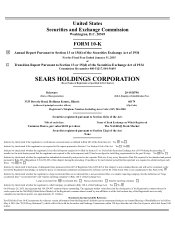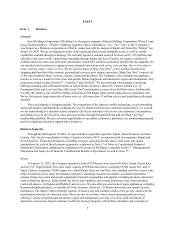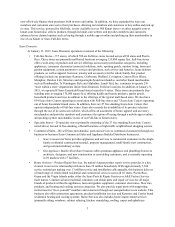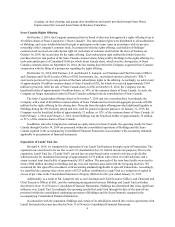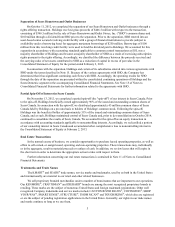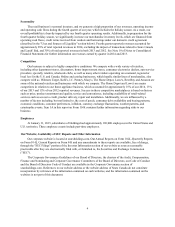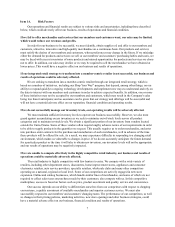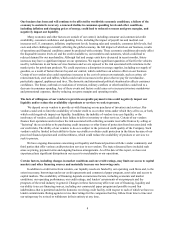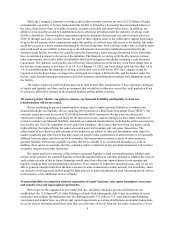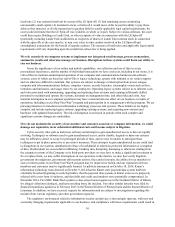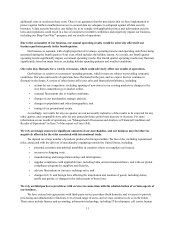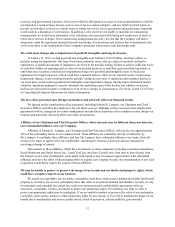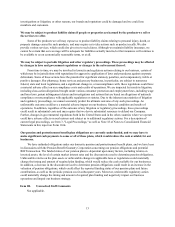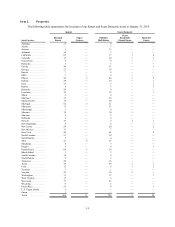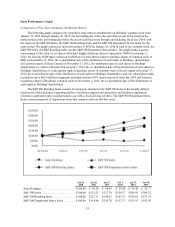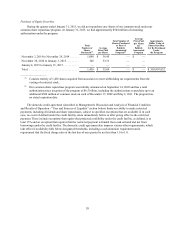Sears 2014 Annual Report Download - page 10
Download and view the complete annual report
Please find page 10 of the 2014 Sears annual report below. You can navigate through the pages in the report by either clicking on the pages listed below, or by using the keyword search tool below to find specific information within the annual report.10
insolvent; (2) was rendered insolvent by reason of the LE Spin-off; (3) had remaining assets constituting
unreasonably small capital; (4) intended to incur, or believed it would incur, debts beyond its ability to pay these
debts as they matured; or (b) the transaction in question failed to satisfy applicable legal capital requirements, the
court could determine that the LE Spin-off was voidable, in whole or in part. Subject to various defenses, the court
could then require Holdings or Lands' End, or other recipients of value in connection with the LE Spin-off
(potentially including Lands' End stockholders as recipients of shares of Lands' End common stock in connection
with the spin-off), as the case may be, to turn over value to other entities involved in the LE Spin-off and
contemplated transactions for the benefit of unpaid creditors. The measure of insolvency and applicable legal capital
requirements will vary depending upon the jurisdiction whose law is being applied.
We rely extensively on computer systems to implement our integrated retail strategy, process transactions,
summarize results and otherwise manage our business. Disruptions in these systems could harm our ability to
run our business.
Given the significance of our online and mobile capabilities, our collection and use of data to create
personalized experiences, and the number of individual transactions we have each year, including in our stores, it is
critical that we maintain uninterrupted operation of our computer and communications hardware and software
systems, some of which are based on end-of-life or legacy technology, operate with minimal or no vendor support
and are otherwise difficult to maintain. Our systems are subject to damage or interruption from power outages,
computer and telecommunications failures, computer viruses, security breaches, catastrophic events such as fires,
tornadoes and hurricanes, and usage errors by our employees. Operating legacy systems subject us to inherent costs
and risks associated with maintaining, upgrading and replacing these systems and retaining sufficiently skilled
personnel to maintain and operate the systems, demands on management time, and other risks and costs. Any
material interruption in our computer operations may have a material adverse effect on our business or results of
operations, including on our Shop Your Way® program and participation in or engagement with that program. We are
pursuing initiatives to transform our information technology processes and systems. These initiatives are highly
complex and include replacing legacy systems, upgrading existing systems, and acquiring new systems and
hardware with updated functionality. The risk of disruption is increased in periods when such complex and
significant systems changes are undertaken.
If we do not maintain the security of our member and customer, associate or company information, we could
damage our reputation, incur substantial additional costs and become subject to litigation.
Cyber-security risks such as malicious software and attempts to gain unauthorized access to data are rapidly
evolving. Techniques or software used to gain unauthorized access, and/or disable, degrade or harm our systems
may be difficult to detect or scope for prolonged periods of time, and we may be unable to anticipate these
techniques or put in place protective or preventive measures. These attempts to gain unauthorized access could lead
to disruptions in our systems, unauthorized release of confidential or otherwise protected information or corruption
of data. If individuals are successful in infiltrating, breaking into, disrupting, damaging or otherwise stealing from
the computer systems of the Company or its third-party providers we may have to make a significant investment to
fix or replace them, we may suffer interruptions in our operations in the interim, we may face costly litigation,
government investigations, government enforcement actions, fines and/or lawsuits, the ability for our members to
earn or redeem points in our Shop Your Way® program may be impacted or halted, and our reputation with our
members and customers may be significantly harmed. As publicly announced on October 10, 2014, Kmart’s
information technology team detected on October 9, 2014 that the Kmart store payment data system had been
criminally breached beginning in early September, that the payment data systems at Kmart stores were purposely
infected with a new form of malware, and that debit and credit card numbers were potentially compromised. In
December 2014, First NBC Bank filed a putative class action lawsuit against us in the Northern District of Illinois
for alleged violations relating to, and harm resulting from, the incident. Two other similar lawsuits were filed by
financial institutions against us in February 2015 in the Western District of Pennsylvania and the Eastern District of
Louisiana. In addition, we have received requests for information and are subject to investigations regarding this
incident from various regulatory and other government agencies.
The regulatory environment related to information security and privacy is increasingly rigorous, with new and
constantly changing requirements applicable to our business, and compliance with those requirements could result in

